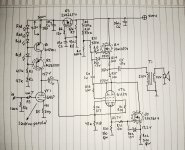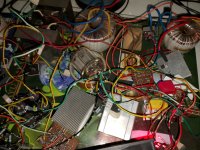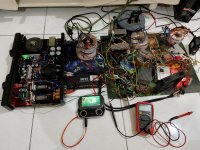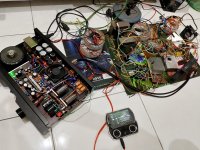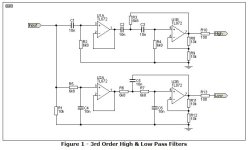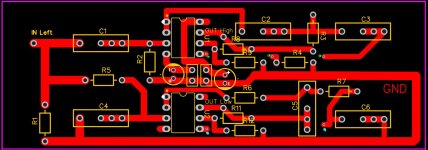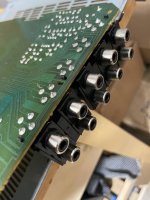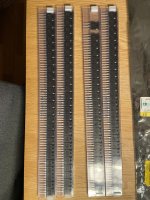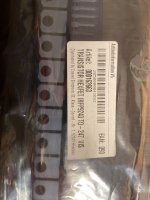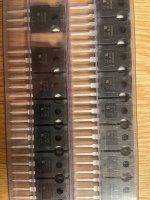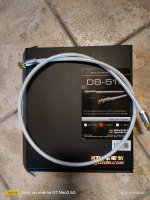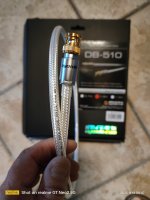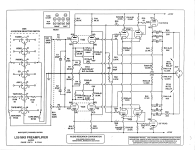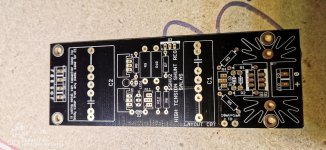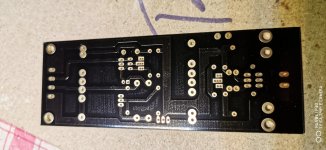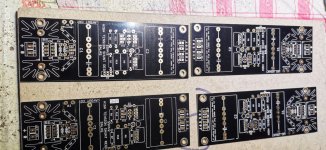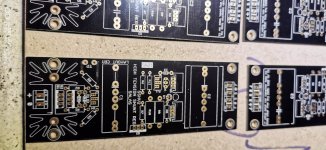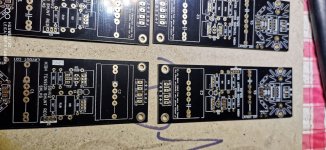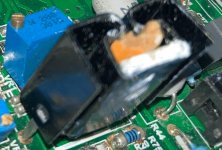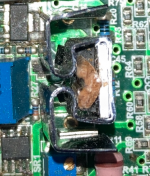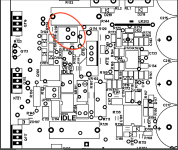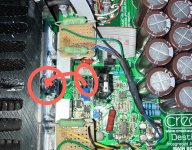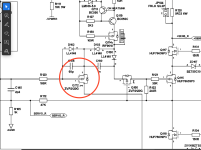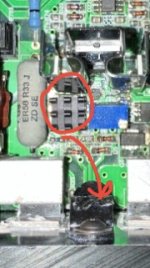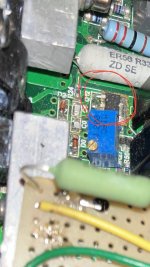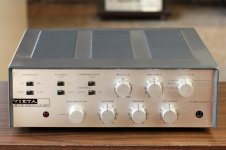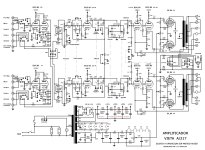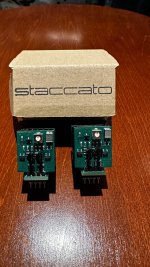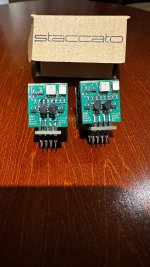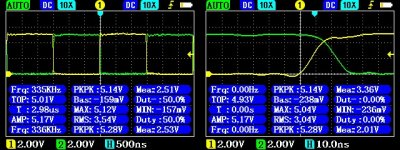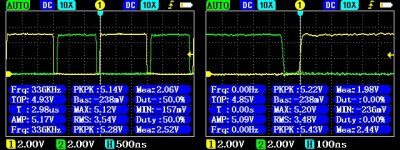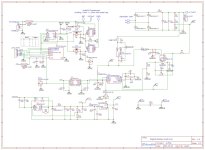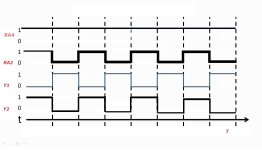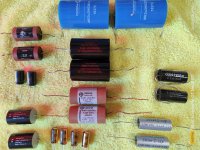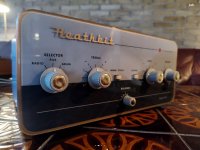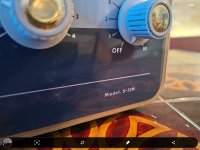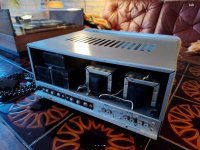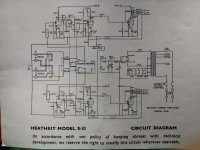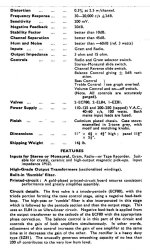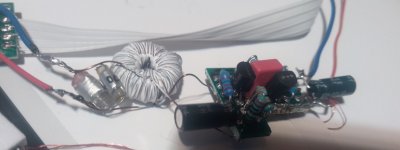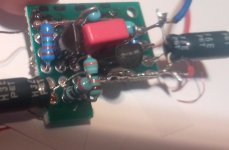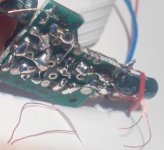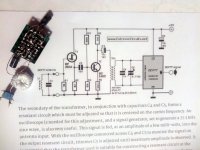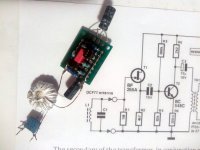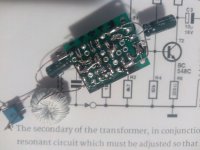Staccato Audio has been building op-amps since 2017 and the current form is a hybrid Class A op-amp using the BC560 transistor. In the production process for their “Open Sound Hybrid” (OSH) op-amp, the company uses matching input 2SK209 JFETs transistors from the batch of 1000psc, and adjusts the output current to keep the same load for all three output pairs of 2SK2145. Staccato Audio's manufacturing of high-performance discrete op-amps in Poland is led by engineers Jakub Honkisz, who is the founder and project manager, and Morten Oksbierg, who designs the analog circuits. They also make class A amplifiers.
Jakub Honkisz sent 3 OSH-DHb Dual discrete horizontal op-amps for this review. Staccato Audio op-amps makes use of J-FET, in both the input and output stages in combination with a high bias current with low open loop distortion with domination of 2nd order harmonics. The source follower at the output uses an active current source which allows higher output current than the bias current. The highest output Current is ±30mA. Two voltage ranges are listed as the op-amps can be driven to 18V if cooling is sufficient but will need to be dropped back to a maximum of 15V in applications where tight fits and lack of air movement leads too much heat. With class A bias, crossover distortion is decreased in the staccato op-amps. Total Harmonic Distortion is listed in the data sheet as 0.0002.
In contrast, Burson V6 classic has Total Harmonic Distortion of .02 and is not class A. In a previous review, I found the Burson V6 classics to be superior in a subjective listening test to the Burson V5 and OPA627.
The Staccato Op-amps stand about 1.25 inches high (not counting pins) and are roughly 1 inch on the side and 3/8 inches thick. I was sent three OSH-DHb Dual discrete horizontal op-amps shown below:
The Staccato op-amp packaging was good with all 3 op-amps I received in a sturdy box with 3 small boxes in it containing a bag with the op-amp. The legs of the op-amps were secured with foam to prevent bending during shipment. The product arrived from Poland.
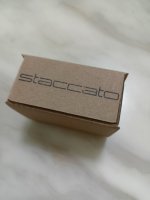
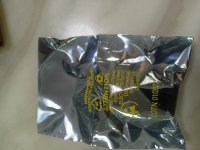

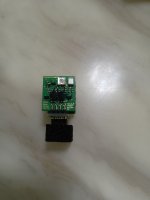
Packaging and comparison of Burson V6 Classic and Staccato Audio Op-amp size
My system is composed of an Asus Gaming Computer running JRiver media center 28 which I modified to up sample all files to 96 KHz which are stored on a Passport external hard drive. I have an external Musiland external soundcard I use with optical out through a glass optical interconnect to a Cyenne 3100 DAC which has three replaceable op-amp sockets. The DAC output goes to a Cambridge Audio CXA60 amp. I have Mordaunt-Short Aviano 6 speakers and a Wharfedale subwoofer.
My dedicated room, specifically built for music, has highly acoustically treated ceiling, walls and corners and a straight equalization curve along the x axis, according to Room EQ Wizard, without any equalization required in the JRiver. To achieve this on axis equalization with only treatment took years of work installing the proper arrangement and rearrangement of bass traps and acoustic tiles.
Ceiling acoustic treatment
Cyenne 3100 Dac with 3 Staccato Audio dual op-amps
The Cyenne 3100 Dac has 3 removal socketed op-amps. One serves as a combiner op-amp for the DAC. The other two are gain op-amps. The sockets will vary from Staccato Audio discrete op-amps to Burson V6 Classic. Since I only have 2 Burson V6 Classics, they will be placed in the gain op-amp sockets and a Burson V5, similar to the Burson V6 Vivid, in the combiner op-amp socket. I will listen to a playlist of Flac files with a minimum 44.1 KHz and note any sound differences for each op-amp.
I plan to look at the following factors to evaluate the op-amps reviewed: transparency, details, color and texture, and dynamics and soundstage.
Definitions:
Transparency: the sound is reproduced accurately without adding much extra.
Detail: hearing the small, fine sounds of a recording; the most delicate parts of the original sound.
Color and texture: Tone color or texture of a sound is the quality that allows you to separate two instruments playing the same instrument. It is hearing the different layers and harmonies of music.
Dynamics and soundstage: variation in loudness between notes in the spatial sound image presented to the listener.
Tracy Chapman - Fast Car
I begin my review with
Tracy Chapman’s Fast Car.” “Fast Car” is a favorite of Harmon Audio. Their site states that this track is not only one of the most beloved ballads of the 1980s, but also has a fair amount of bass that will often cause modulations to her voice on a system where the woofer is driven beyond its limits. It produces a high quality ‘musical’ signal.
All listening tests are listened to with an average of 78 db of sound. The test is not blind since I did not trust anyone to properly replace the op-amps. I am familiar with the V6 Classic sound and the Staccato sound is so unique, it could not be confused by me; so little is lost with a nonblind comparison.
With the
V6 Classic the sound was superb as expected based on my past review. Bass is adequate and when the chorus kicks in the drums attack with gusto while the vocal is natural sounding with good instrument separation. The dynamic range from low to high is smooth and natural.
The Staccato OSH-DHb in all three sockets was completely different in character. As expected from the Staccato superior metrics, the sound was much more transparent and less colored. Chapman’s vocal displayed no obvious alteration from what would be expected from the recording studio. When the chorus hits all the drum details are heard clearly, but without an edge an increased clarity often imposes. Bass and dynamic range is impressive with no part of the frequency response seemingly changed for emphasis.
Van Morrison – Flamingoes Fly
This is a lovely love song by Van Morrison which was slowed down and made more palatable on the “Philosopher’s Stone” Cd than the original and disappointing “A Period of transition” cd.
The
V6 Classic presented with deep bass, excellent texture with spatially distinct instruments and vocal centered. The vocal and music sounds live with instruments coming from all corners.
The
Staccatos provide very deep strong bass. Details seem more defined. It is a more analytic presentation that reveals specifics not found in the V6 Classic presentation. Peripheral details in the respectable soundstage are more pronounced. The midrange sounds less pronounced than the V6, possibly due to an unaltered presentation of the material.
Sinead O’Connor – Black Boys on Mopeds
In this protest song in which O’Connor sings that Van Morrison’s depiction of Madame George and roses during Margaret Thatcher’s reign is a fantasy due to a tragic shooting of a black man on a scooter. It is beautifully presented with the
V6 Classic op-amps. During the listening, background vocals echoes can be heard blending well with the lead vocal with a warm tonal quality. Vocals are very wide and breathing is clearly heard during the song.
The
Staccato again provides more clarity in the vocals and even allows the sliding of fingers on the guitar strings during chord changes to be clearly heard. These are very transparent op-amps and although the V6 Classics are pleasant sounding, they clearly color the musical presentation at the expense of recorded details.
Beercan – Beck
This is a fun, fast moving tune with a great opportunity to check dynamic range and presentation of texture and soundstage due to the numerous instruments and peaks and lows in the music. The
V6 presents the deepest bass heard yet in any recording reviewed. Instrumentation is clear and distinct. As said, the track is very busy musically, but each instrument is heard distinctly while lows, mids and highs are heard clearly with a wide soundstage.
The
Staccato presentation, similar to the V6, provides a very prominent bass. The track is very sonically busy, but there is nothing hidden or masked by coloration. The Staccato op-amps seem faster than the V6 with complex musical forms and never seems to lose details with the tempo of the music or busy texture. Details remain prominent and defined without sharp edges, despite the transparency.
Kiko and the Lavender Moon – Los Lobos
This is an excellent song by a great band. The
V6 provides good dynamic range with good perceived high frequency response and punchy bass. The soundstage is wide and texturally each instrument and tone can be heard distinctly. Clarity is present in the music, but warm without harshness.
The
Staccato Is again clear in presentation. Vocals and instrumentation provide an immersive soundscape with the Staccatos. There is clarity and presence with the percussion with a slightly recessed midrange. The transparency of details lets the listeners know what is heard is uncolored and what likely happened in the studio
.
Mr. Jones – Counting Crows
A song about wanting to be Bob Dylan beautifully sung and presented by the Counting Crows. The
V6 presents punchy bass and a forward vocal soundstage. Instrumentation is copious but spatially diverse and not smeared but with a smooth warmth.
Staccato op-amps definitely preset a better musical performance than the V6 on the track. The bass is strong, but more rounded and developed. Background vocals are more easily heard and immersive than the V6 as well. Detailed music reproduction is the norm with the Staccato op-amps and their clear, refined and transparent sound is repeated on this track.
Summary
The review favors the Staccato op-amps over the Burson op-amps with respect to less distortion and coloration. They are, in short, more transparent, detailed and with less coloring and masking of timbre with equalization while also maintaining good dynamics and an adequate soundstage which seems to represent an authentic soundstage.
This does not mean the V6 Classics are bad op-amps. They are very pleasant to listen to and may be the choice for those who want a warmer, but less detailed presentation. I will keep the Staccatos in the sockets.
A Few Words on Audio measurements and Discrete Op-amps.
Paul McGowan of PS Audio remarks that a designer does not design a discrete circuit, which is more expensive, when a 50-cent part is available for no good reason. He goes on to state that silicon in wafer form has tremendous benefits in terms of temperature, component matching and speed. However, discrete op-amps exceed in contrast when it comes to heat, ability to source current and design parameters chosen the designers. Staccato Audio’s class A bias is one advantage of these characteristics Paul McGowan mentions.
Some readers are strictly objectivists in reviews of audio. Subjective preferences are considered unscientific and useless by objectivists.
Most people would consider medicine to be scientific, but would be shocked if physicians could only feel a pulse, or listen to a heart but would not listen to client complaints of fatigue, pain or other subjective ailment. Psychiatry as a medical profession would cease to exist if subjective evaluations were dismissed.
With respect to audio, THD is important when evaluating an op-amp as is open loop gain, slew rate, etc., but if several op-amps meet acceptable criteria for these metrics shouldn’t consumer subjective preference be considered? Harman Audio thinks so and uses subjective evaluations of listeners to improve their products with engineers altering products to meet the subjective evaluation needs of critical listeners.
The following information is acquired from the chapter “The subjective correlates of sound level, frequency, and spectrum” as described in
Critical Listening Skills For
Audio Professionals by F. Alton Everest.
An audio engineer has available an impressive array of instruments for measuring the physical
aspects of sound. One is the sound level meter, by which he can readily measure sound pressure
level or intensity as it is also known. Another is the electronic counter, which can faithfully count each cycle of a periodic sound wave and thus determine its frequency. He also has a spectrum analyzer that reveals at a glance the harmonic structure of a complex periodic wave. These instruments and others all operate in the realm of applied physics. They measure only the physical attributes of the sound as it comes to our ears. The response of our ears to that sound stimulus exists in an entirely different realm: the realm of psychoacoustics.
There are no subjective instruments or meters that can give us direct readings of the response of
an individual to different physical stimuli. Each person responds in a different way. The only
way to measure human response to different sounds is by psychoacoustic testing. Panels of
observers or listeners are the very heart of such experiments, and their response must be
statistically analyzed to get dependable answers.
No longer can audio people take the ear for granted. The auditory response to speech and music vibrations in the air must be taken into careful consideration, for human perception is the final link in the audio chain. The frequency response of our auditory system changes with the sound level.
Subjective loudness and physical-sound-level meter readings can only be correlated through psychoacoustical measurement techniques involving human listeners. When you go to an otologist or a clinical audiologist to have your hearing tested, your audiogram is really your own personal minimum audible equal-loudness contour. The frequency response of our auditory system changes with the sound level.
One way to define pitch is that attribute of sound which, when varied, can result in melody. Pitch is another strictly subjective concept. Pitch is related to the repetition rate of the waveform of sound. For a pure tone, pitch is related to frequency. There is a curious phenomenon called low pitch in which complex tones tend to have a slightly lower subjective pitch than pure tones of the same frequency. In the following comparison, the A note on the piano and the pure tone from an oscillator have been carefully adjusted with an electronic counter to have exactly the same frequency: The pitch of the piano note seems to be slightly lower than that of the pure tone. The presence of the partials in the complex tone has to be responsible for this effect, because the fundamentals of both are pure tones of identical frequency.
The “case of the missing fundamental” casts an interesting sidelight on timbre. Let’s consider three pure tones: 400, 600, and 1000 Hz: There are three distinct pitches, since each tone has its own pitch. Now, let’s see what happens when all three are sounded together: The pitch of the combination is not that of the 400-, the 600-, or even the 1000-Hz tone; neither is it a mixture or average of the three. Rather, what we hear is the pitch of a 200-Hz tone: Now, what is so significant about a 200-Hz frequency? One clue is that 400 and 600 are 200 Hz apart. Also, 600 and 1000 are twice 200 Hz apart. Everything comes together and is understandable if these three tones are considered as harmonics of a 200-Hz fundamental. Thus, the pitch of the combination turns out to be that associated with a 200-Hz fundamental which isn’t there at all! The ear/brain auditory system has it all figured out that only a fundamental of 200 Hz makes sense of these three tones considered as harmonics.
In summary, loudness, pitch, and timbre are subjective characteristics of sound. There are no instruments for direct measurement of these dimensions of sound. The responses of many people in a psychoacoustic type of test are the only way to quantify these factors. Sound-pressure level is a physical correlate for loudness, but the two terms may not be equated. In a similar way, frequency is a physical correlate for pitch, and spectrum is a physical correlate for timbre. But it is imperative that we do not confuse the physical stimulus with the psychoacoustical response.
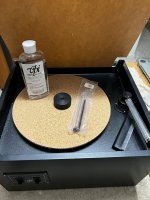
![IMG_7089[1].JPG](/community/data/attachments/1152/1152572-c9d7c7d8cc9308fc1fabddf747113825.jpg?hash=ydfH2MyTCP)
